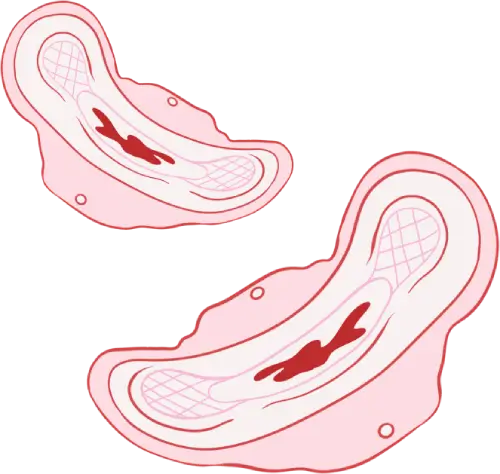Edit Content
Language as a tool to destigmatise menstrual experiences
Language stands at the core of our action towards menstrual justice. Since we started Jeyetna we have agreed to use a lexicon that does not carry further stigma in the different languages we operate in (Arabic, English and French). In our work towards destigmatising menstrual experiences, we choose descriptive language and stress the importance of using existing vocabulary instead of euphemisms to lift the heavy silence around menstruation. Duringour in-person events we focus on questioning expressions, idioms and adjectives used to describe menstrual experiences, including menopause.
The aid and development sector, spearheaded by the United Nations, uses terms like “Menstrual Hygiene Management”, “Hygiene” and “Sanitary products”. The words “hygiene/hygienic” and “sanitary” carry the idea of a loaded binary of clean versus unclean that pertains to discussion around menstrual blood, which is further pushed by product advertisements.
Some products are also labelled feminine hygiene products, which equates the menstrual cycle with femininity. This is an issue for two reasons: (1) femininity is a vague term used to enforce gendered behaviour, characteristics and expectations on women and girls globally. (2) not all women menstruate, and not all people who menstruate are women; menstrual justice includes transgender, non-binary, non-conforming genders, and people who identify as masculine/men.


Menstrual equity primarily focuses on ensuring fair access to menstrual products, education, and healthcare.
Goals:
Approach: Practical and immediate solutions to remove barriers to menstrual health management.
Examples:
Menstrual justice encompasses a systemic approach, addressing the root causes and broader socio-economic, cultural, and political inequalities related to menstruation.
Goals:
Approach: Long-term, systemic change to address deep-rooted inequalities and injustices.
Examples:

Menstrual health is a state of complete physical, mental, and social well-being and not merely the absence of disease or infirmity, in relation to the menstrual cycle. Achieving menstrual health implies that women, girls, and all other people who experience a menstrual cycle, throughout their life-course, are able to:
Hennegan, J., Winkler, I. T., Bobel, C., Keiser, D., Hampton, J., Larsson, G., Chandra-Mouli, V., Plesons, M., & Mahon, T. (n.d.). Menstrual health: A definition for policy, practice, and research. Sexual and Reproductive Health Matters, 29(1), 1911618. https://doi.org/10.1080/26410397.2021.1911618
Disposable menstrual products are items designed for single-use during menstruation, after which they are discarded.
These products are widely used due to their convenience and availability. Disposable menstrual products offer convenient and accessible options for menstrual management but come with environmental and economic considerations. They include sanitary pads, tampons, panty liners, disposable menstrual cups, menstrual discs, and disposable period underwear, catering to a wide range of needs and preferences. Key types of disposable menstrual products include:
Menstrual Pads
Tampons
Panty Liners
Menstrual Discs
Disposable Period Underwear


Reusable menstrual products are designed to be used multiple times over an extended period, offering a cost-effective and eco-friendly alternative to disposable options.
They include menstrual cups, cloth pads, period underwear, reusable menstrual discs, and sea sponges. These products help reduce environmental impact, save money over time, and often offer added comfort and health benefits, though they require an initial investment and regular maintenance. Here are some common types of reusable menstrual products:
Reusable (cloth) Menstrual Pads
Period Underwear
Menstrual Cup
Reusable Menstrual Discs

